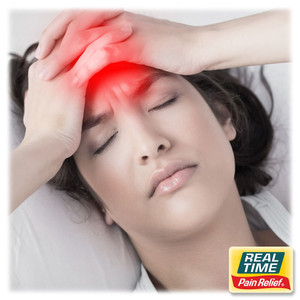4 Reasons to Stop Sitting With Crossed Legs
3rd Mar 2021
Sitting with our legs crossed is a very common way of sitting. Whether it is at the office, on public transportation, or relaxing at home, many people’s go-to posture is one leg over the other, crossed at the knee. This may be the comfortable position for you to sit and it may also come in handy in crowded areas, however, there are some negative side effects from sitting in this position for too long.
Here are 4 reasons that researchers say that sitting with your legs crossed isn't good for your body:
1. It Contributes to Neck and Back Pain:
No one wants to contribute to their back pain, especially when it comes to the way they sit! Vivian Eisenstadt, an orthopedic physical therapist, explains how sitting with your legs crossed creates and adds to existing neck and back pain. She says that sitting this way leaves your hips uneven and forces your pelvis bone to rotate. The pelvic bone is the base of support for the spine; if it is left unstable, it can produce unnecessary pressure on the neck and the lower and middle sections of the back. And sure enough, the longer you sit in this uneven position, the more pressure is placed on your spine, increasing the likelihood that it will develop into a long-term issue.
2. It Negatively Affects Your Posture:
We may not think about it but studies have found that poor posture increases pain in our joints, slows down digestion, affects our circulation, and even adds to our stress levels! A Harvard study revealed that those who practice proper posture show a 25% decrease in cortisol levels. That’s our main stress hormone! And sure enough, those who sit cross-legged are found to slouch more often, which means that they are not walking the recommended way: with open shoulders and an aligned spine.
3. It Can Negatively Affect Your Nerves:
While it is unlikely to cause permanent nerve damage from sitting with your legs crossed, the position does have a direct effect on the nerve behind the knee. The peroneal nerve is a part of our sciatic nerve. Many people who suffer from back issues are familiar with the term “sciatica,” which classifies as a consistent pain down one side of the buttocks and leg that worsens upon sitting. Sciatica, in particular, often contributes to foot numbness and walking problems. Sitting cross-legged is not a known cause for sciatica but placing this extra pressure on this nerve for long periods of time can affect its integrity.
4. It Temporarily Increases Blood Pressure:
Blood Pressure Monitoring published a study that states sitting with your legs crossed at the knee increases diastolic blood pressure by 2% and systolic by 7%! However, it is proven that this increase in blood pressure is only temporary, but is still of concern to those already experiencing high blood pressure. Due to this fact, experts recommend that you avoid or limit your time with your legs crossed so that your blood pressure will not be affected.
Conclusion:
For optimum health, researchers recommend sitting with your knees and ankles at 90-degree angles and keeping your pelvis balanced as much as possible. Breaking the habit of sitting with your legs crossed at the knee may take time, but if you start slow and stay consistent, you will notice an improvement. Try breaking up your time sitting with crossed legs into 15-30 minute intervals and allow yourself to stretch periodically to offset the posture.
If sitting with your legs crossed has been a regular practice most of your life it is unrealistic that right away you’ll be able to maintain perfect posture every time you sit down. Just know that most of these side effects of sitting with crossed legs do not translate to long-term issues. You have time to change your habit without causing harm to your body.
Bonus Tip: Set an alarm at intervals of 30 minutes to 1-hour. When this alarm rings, evaluate how you are sitting and make any adjustments to your posture or do some leg stretches.
FOR OVER 20 YEARS, FAMILIES ACROSS THE U.S. HAVE TURNED TO REAL TIME’S LOTIONS AND CREAMS FOR PAIN RELIEF YOU CAN TRUST®. FROM LIFESTYLE ESSENTIALS, THROUGH OUR NUJUVENA LINE, TO PAIN RELIEF FORMULAS, REAL TIME HAS YOU COVERED.
Sources For This Post:
- http://www.lifehack.org/324449/4-reasons-why-crossing-your-legs-bad-for-you
- https://www.yahoo.com/beauty/sitting-with-your-legs-crossed-4-reasons-to- stop-113359313402.html
- http://www.prevention.com/health/healthy-living/how-bad-posture-affects-your-health-and- happiness/slide/8
- http://www.spine-health.com/conditions/sciatica/what-you-need-know-about-sciatica
- http://www.nytimes.com/health/guides/disease/common-peroneal-nerve-dysfunction/ overview.html





